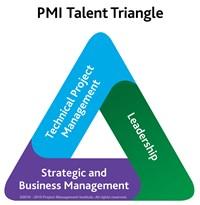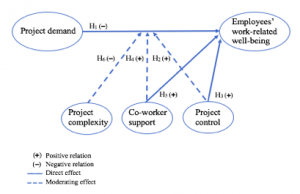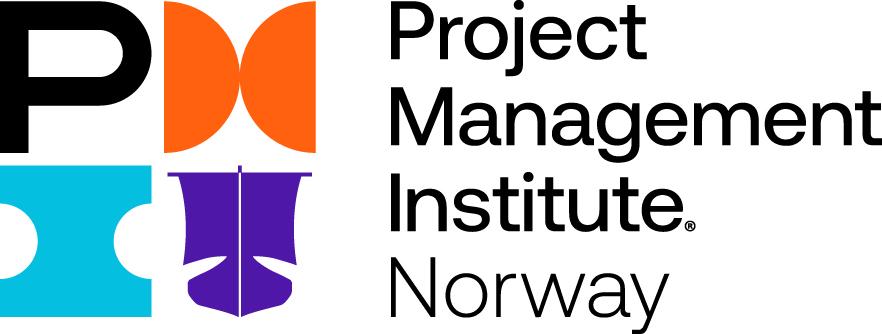August 03 2018 at 11:00AM
The impact of project work on the employees’ well-being

Hvordan påvirker prosjektarbeid ditt velvære? Studentene Charlotte Bråthen og Margrethe Ommundsen har sett nærmere på dette spørsmålet i sin masteroppgave ved Universitetet i Agder og dere som medlemmer av PMI har vært med på å finne svaret.
Hvordan påvirker prosjektarbeid ditt velvære? Studentene Charlotte Bråthen og Margrethe Ommundsen har sett nærmere på dette spørsmålet i sin masteroppgave ved Universitetet i Agder og dere som medlemmer av PMI har vært med på å finne svaret.

Dere finner hele masteroppgaven her og sammendraget er gjengitt under.
Sammendrag
The “dark side” of projectification: The impact of project work on the employees’ well-being. A quantitative study of the impact of project work exposure on employees’ work-related well-being.
Projects has become widely used in recent years, and the use of project-based work is said to foster innovation, efficiency, better conditions for learning, flexibility, less bureaucratic control, motivation and so on (Burke & Morley, 2016; Packendorff, 2002). There has been lots of research on the positive sides of project work, but recently some of the focus has shifted towards the negative sides of it. An important question has been, and still is, whether or not project-based work really is as attractive as it seems (Cicmil et al., 2016).
According to Schoper et al. (2016, p. 27) “over the last decades a steadily increasing amount of value creation of companies has been generated by projects”. The projectification of the society, and the popularity of projects, lead to an increasing number of individuals working in projects (Ekstedt, 2009). While project-based work is said to create dynamic environments for innovation and learning, it can also make the employees vulnerable, exhausted and reduce their personal worthiness. Some have even stated that it can be destructive to the employees’ well-being (Gällstedt, 2003).
By using the Job Demand-Control-Support model (Karasek, 1979) as the starting point of our study, we aimed to explore the research gap of how project work exposure impact employees’ well-being using a quantitative approach. While the main hypothesis considered the impact of project demand on employees’ work-related well-being, the direct and potential moderating effects of project control and co-worker support were also included. In addition, project complexity was considered as a moderating variable.

We conducted a quantitative analysis, based on primary data collected through a web-based questionnaire. The questionnaire was distributed by leading project management associations in Scandinavia and answered by 136 respondents. The main data analysis was done applying PLS-SEM. We are to the best of our knowledge among the first using a quantitative approach to assess the relationship between project work exposure and work-related well-being not limited to one sector, case or industry. Overall, the study contributes to research on several levels. Our results showed that the degree of project demand, project control, co-worker support and project complexity together explain a rather moderate degree of employees’ work-related well-being in the case of project-based work. While the hypotheses considering the direct effect of project demand, project control and co-worker support were supported, the hypotheses considering the moderating relationships were not.
|
Hypothesis |
Supported/Rejected |
|
H1: Project demand on work-related well-being (-) |
Supported |
|
H2: Moderating effect of project control on the relationship between project demand and work-related well-being (+) |
Rejected |
|
H3: Project control on work-related well-being (+) |
Supported |
|
H4: Moderating effect of co-worker support on the relationship between project demand and work-related well-being (+) |
Rejected |
|
H5: Co-worker support on work-related well-being (+) |
Supported |
|
H6: Moderating effect of project complexity on the relationship between project demand and work-related well-being (-) |
Rejected |
Other interesting findings where that the degree of work-related well-being differ between the industries, whereas those working in the ‘Retail/transport/hospitality/tourism’ had the highest degrees of well-being. Furthermore, those working in internal projects indicated a higher degree of work-related well-being compared to those working in external projects. The male respondents showed a higher degree of project demand and a lower degree of work-related well-being than the female respondents. Considering the respondents years of general work experience as well as years of experience with project-based work, the degree of work-related well-being seemed to be fairly constant. Finally, an interesting tendency was that the degree of project demand was often negatively correlated to the degree of project control, i.e. those with a high degree of project demand seemed to have a low degree of project control. In conclusion, and in line with the emerging literature having a critical view on the impact of project work on employees, our results suggest that project exposure can have a negative impact on employees’ well-being.
These findings also have implications for practice. It is not only important to explore how project work impact the employees’ well-being, but also how their well-being can be increased. Over time work characteristics and employees’ well-being mutually influence each other (Bakker & Demerouti, 2014, p. 58). The results in this study suggests that employees’ work-related well-being can be increased by a decrease in the degree of project demand or an increase in the degree of either project control or co-worker support.
References:
Bakker, A.B. & Demerouti, E. (2014). Job Demands–Resources Theory. In Chen, P. Y., & Cooper, C. L. (Eds.), Work and wellbeing. Wellbeing: a complete reference guide, Volume III, pp. 37-64. UK: John Wiley & Sons, Incorporated.
Burke, C.M. & Morley, M.J. (2016). On temporary organizations: A review, synthesis and research agenda. Human relations, 69(6), pp. 1235-1258.
Cicmil, S., Lindgren, M. & Packendorff, J. (2016). The project (management) discourse and its consequences: On vulnerability and unsustainability in project-based work. New Technology, Work and Employment, 31(1), pp. 58-76.
Ekstedt, E. (2009). A new division of labour: The “projectification” of working and industrial life. In M. M-A (Eds.), Building Anticipation of Restructuring in Europe, pp. 31-53. Brussels, Belgium: P.I.E. Peter Lang S.A.
Gällstedt, M. (2003). Working conditions in projects: Perceptions of stress and motivation among project team members and project managers. International Journal of Project Management,21, pp. 449–455.
Karasek, R. (1979). Job demands, job decision latitude and mental strain: Implications for job redesign. Administrative Science Quarterly, 24(2), pp. 285-308.
Packendorff, J. (2002). The temporary society and its enemies: Projects from an individual perspective. In: K. Sahlin-Andersson & A. So?derholm (Eds.) Beyond project management: New perspectives on the temporary-permanent dilemma (pp. 39-58). Malmo?: Liber.
Schoper, Y., Gemünden, H. G., & Nguyen, N. N. (2016). Fifteen future trends for project management in 2025. In Knöpfel, H. & M-A, J. (Eds.). Future trends in project, programme and portfolio management 2016.Proceedings of the International IPMA Expert Seminar in Zurich in February 18th–19th, 2016, pp. 23–43.



